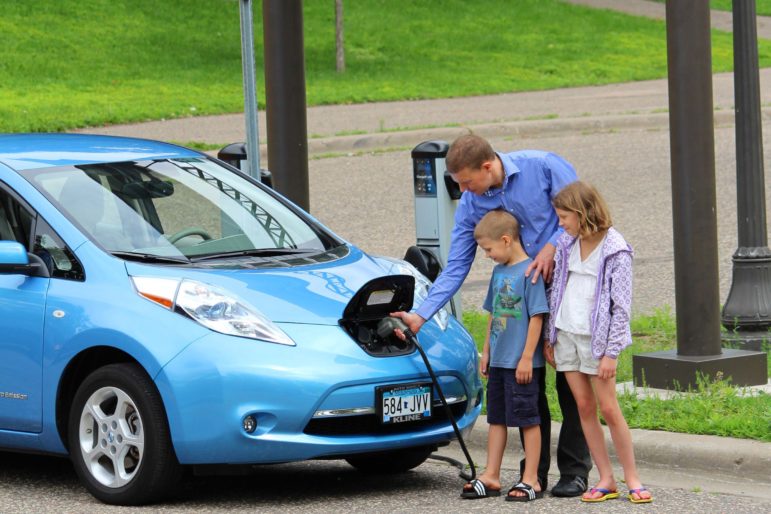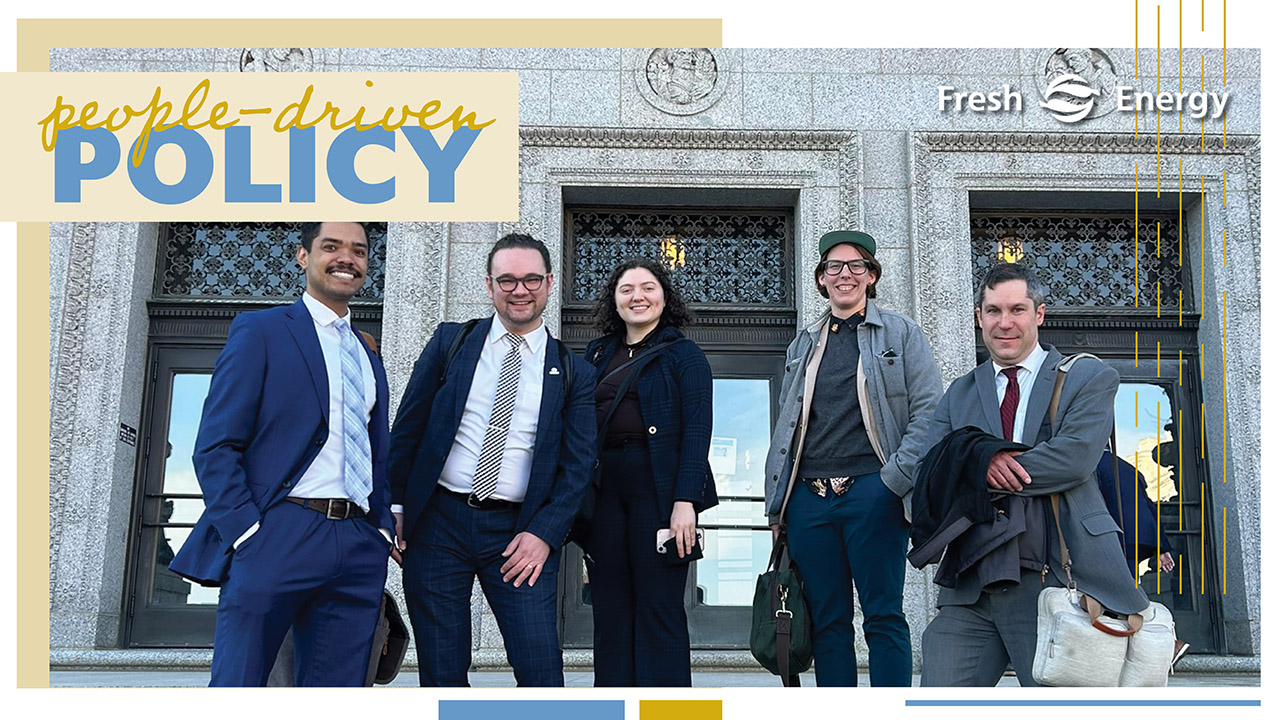
This piece originally ran in MinnPost on August 8th.
Electric vehicles and renewable energy are like peanut butter and jelly: They’re great on their own, but they’re so much better together. Electric vehicles save money and are better for the environment, and wind energy is the lowest-cost way to make electricity in Minnesota. When combined, renewable energy makes electric vehicles cleaner and cheaper, and, at the same time, electric vehicles can help integrate variable renewable electricity generation.
Peanut butter
Electric vehicles are great for the planet. An electric vehicle charged by Xcel Energy — the national leader in wind generation — has just one-third the greenhouse gas emissions of the average gas car. They are also better for public health: Because they have no tailpipe emissions, that harmful local pollution is removed from densely populated urban areas. And when electric vehicles are powered by renewable energy, they have almost no emissions at all!
Jelly
Wind power is not just clean, it’s also lowest-cost electricity source in Minnesota. The Great Plains have some of the best wind resources in the world, which translates into cheap electricity. How cheap? Utilities in the Upper Midwest have been purchasing long-term contracts for new wind farms for less than 2¢/kWh. By comparison, it costs over 2.5¢/kWh just for the fuel needed to run an existing coal or natural gas power plant. Wind power is also great for local economies: The wind industry employs over 2,000 people in Minnesota with family-supporting wages, and wind farms pay over $10 million a year to Minnesota counties for roads and schools.
But while wind is the lowest-cost generation available in Minnesota, wind speeds are not constant, so wind farms produce more electricity at some times than at others. At current levels of wind generation, that’s no problem; a detailed engineering study by the Minnesota Department of Commerce found that we could get 40 percent of our electricity from wind and solar without compromising reliability, which would be double our current production from wind and solar. But as we move toward 100 percent renewable energy, this variability creates challenges that will need to be overcome.
PB&J
That’s where electric vehicles come in. Electric vehicles are the ultimate flexible electricity user: As long as their car is fully charged by the time they want to leave in the morning, most customers couldn’t care less whether it was charged at 5 p.m. or 4 a.m. All electric vehicles have built-in charging timers, which can be set to charge only during certain hours. Moreover, smart chargers — like the ChargePoint Home — can be remotely controlled by utilities or third-party energy managers. This means groups of electric vehicles could be used to help integrate high levels of variable renewables. Using detailed weather forecasts, electric vehicles could be directed to charge when renewable production is highest. This will allow us to add even more low-cost renewable energy, which would help the planet while also saving all utility customers money.
Renewable energy can also help to make driving an electric vehicle even cheaper. Electric vehicles already cost less to fuel than gas cars. Filling up on low-cost renewable energy overnight can more than double those savings; case in point, charging an electric vehicle on Xcel Energy’s overnight electric vehicle rate is like paying just 60 cents per gallon for gasoline.
Making the sandwich
Like peanut butter and jelly, it almost seems like electric vehicles and renewable energy were made for each other. When combined, they can save consumers money while helping speed the transition to a carbon-free future. At Fresh Energy, we’re working to promote time-of-use pricing and special electric vehicles charging rates to encourage electric vehicle owners to charge overnight. This is the first step toward making the renewable electric vehicle dream a reality. Electric vehicle owners can also go renewable by adding solar panels or subscribing to a community solar garden.

